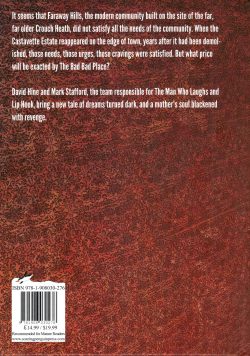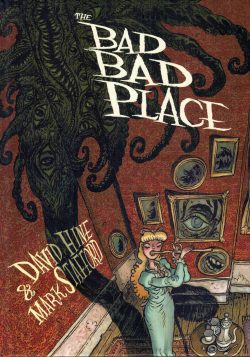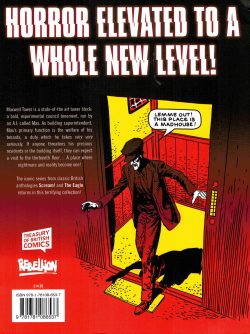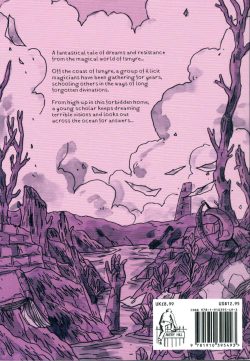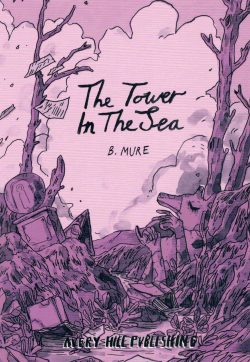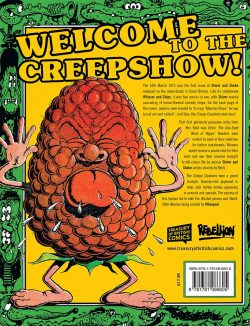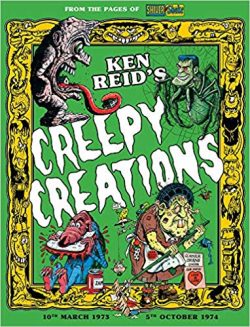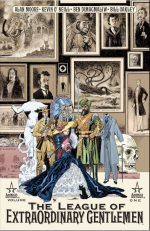
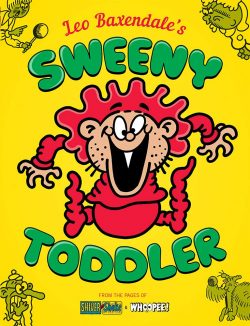
By Leo Baxendale & others (Rebellion Studios)
ISBN: 978-1-78108-726-8 (HB)
Win’s Christmas Gift Recommendation: Utterly Bonkers, Inspired Lunacy… 10/10
If you know British Comics, you know Leo Baxendale.
He was the epitome of rebellious, youth-oriented artistic prodigies who, largely unsung, went about seditiously transforming British Comics: entertaining millions and inspiring uncounted numbers of those readers to become cartoonists too.
Joseph Leo Baxendale (27th October 1930 – 23rd April 2017) was educated at Preston Catholic College, served in the RAF and was born on 27th October 1930, in Whittle-le-Woods, Lancashire – but not necessarily in that order.
His first paid artistic efforts were drawing ads and cartoons for The Lancashire Evening Post but his life – and the entire British comics scene – changed in 1952 when he began freelancing for DC Thomson’s top weekly The Beano.
Leo assumed creative control of moribund Lord Snooty and his Pals and originated anarchically surreal strips Little Plum, Minnie the Minx, The Three Bears and When the Bell Rings. This last strip soon metamorphosed into the legendary, lurgy-packed Bash Street Kids, thereby altering the daily realities and lifetime sensibilities of millions of readers and generations of kids.
Baxendale also contributed heavily to the creation of comics tabloid The Beezer in 1956, but, following editorial and financial disputes with his editors, migrated in 1962 to London-based, Harmsworth-owned conglomerate Odhams/Fleetway/IPC.
South of the border, his initial humorous creations included Grimly Feendish, General Nitt and his Barmy Army, Bad Penny and a horrid horde of similarly revoltingly, uncannily engaging oiks, yobs and weirdoes who cumulatively made the company’s “Power Comics†era such a joy to behold.
During the 1970s he devised more remarkable cartoon star turns which, whilst not perhaps as groundbreaking as Plum, Minnie, or The Bash Street Kids nor as subversively enticing as Wham, Smash and Pow creations such as Eagle Eye, Junior Spy, The Swots and the Blots or The Tiddlers (or indeed, as garishly outlandish as George’s Germs or Sam’s Spook), remained part of the nation’s junior landscape for decades ever after.
The main body of his later creations appeared in Buster: features such as The Cave Kids, Big Chief Pow Wow, Clever Dick and Snooper. Baxendale latterly foisted Willy the Kid on the world before creating his own publishing imprint – Reaper Books.
He also sued DCT for rights to his innovative inky inventions: a 7-year struggle that was eventually settled out of court. Other notable graphic landmarks include pantomimic vision THRRP!, his biography A Very Funny Business: 40 Years of Comics and the strip I Love You, Baby Basil which ran in The Guardian during the early 1990s.
Signature stinker Sweeny Toddler debuted in Shiver and Shake in 1973, unsurprisingly surviving repeated mergers – with Whoopee! and Whizzer and Chips – before settling in at the seemingly unsinkable Buster.
This stunning hardback (and eBook) celebration – hopefully the first of many gathering the entire run – is another crucial addition to Rebellion’s ever-expanding Treasury of British Comics. It gathers the episodes from Shiver and Shake (spanning March 10th 1973 to 5th October 1974), plus the first tranche from Whoopee!, beginning with 23rd November 1974 until 7th June 1975).
The potent package is suitably garnished with an appreciative and informative Introduction by his son Martin (who also drew the Bad Boy’s adventures after Baxendale senior moved into publishing) and is a magnificent exercise in manic misrule starring the absolute worst baby in the world…
In a simple terrace house with the legend “Tremble wiv fear, Sweeny livs here†scrawled all over it, lives a spotty (occasionally be-stubbled) mono-fanged tyke who is disturbingly fast and strong with a physiognomy that can sour milk.
He is able to read – after a fashion – and that, coupled with a lethally low tolerance for boredom and obedience, means the nasty nipper always finds new and distressing ways to amuse himself at someone else’s expense…
With or without faithful dog and eager abettor Hairy Henry, Sweeny turns every pram ride into a pulse-pounding rollercoaster adventure for his poor benighted mum and grandad, every visit to park, shop or museum into a heart-stopping chase and every cuddlesome interlude with ill-advised adults into an exhausting episode in psychological and physical torture…
At least six strips re-presented here are not by Baxendale, but record-keeping is sadly incomplete. Chances are they’re drawn by Tom Paterson, who eventually took over the feature (or possibly Roy Nixon?) but they are all deliciously weird and wonderful: a blend of unbeatable whacky wordplay, explosive slapstick and bizarre situations, garnished by Baxendale’s unique and evocative sound effects: once read, never forgotten…
Briefly retitled Help! It’s Sweeny Toddler in experimental pages that feature second stories starring monstrous beasts living the borders and margins of the panel dividers, the latter pages never lost the eccentric impetus of the first, with the baby from hell, as ever, mugging old ladies, postmen, schoolboys and other unwary visitors; creating his own zoo, attempting to sneak into X films (remember those, kids?) and totally tormenting anyone who treats him like a child…
As well as straight strips, this first collection also offers ‘Sweeny Toddler’s Beat the Bully Guide’ and graphic game ‘Sweeny Toddler’s Fifty Frightful Faces!’, proving the vile versatility of the little villain…
Leo Baxendale was one-of-a-kind: a hugely influential, much-imitated master of pictorial comedy and noxious gross-out escapades whose work deeply affected (some would say warped) generations of British and Commonwealth kids.
We’ll not see his like again, but these astoundingly engrossing comedy classics are a perfect example of his resolutely British humorous sensibilities – absurdist, whimsically anarchic, outrageously aggressive, crazily confrontational and gleefully grotesque – starring an unremittingly rebellious force of nature with no impulse control.
Sweeny Toddler says and does whatever he wants as soon as he thinks of it, albeit usually to his own detriment and great regret: a rare gift, usually only employed by madmen and foreign Presidents…
These cartoon capers are amongst the most memorable and re-readable exploits in all comics history: smart, eternally, existentially funny and immaculately rendered. This a treasure-trove of laughs that spans generations and must be in every family bookcase.
© 1973, 1974, 1975 & 2019 Rebellion Publishing Ltd. Sweeny Toddler is ™ Rebellion Publishing Ltd. All Rights Reserved.

